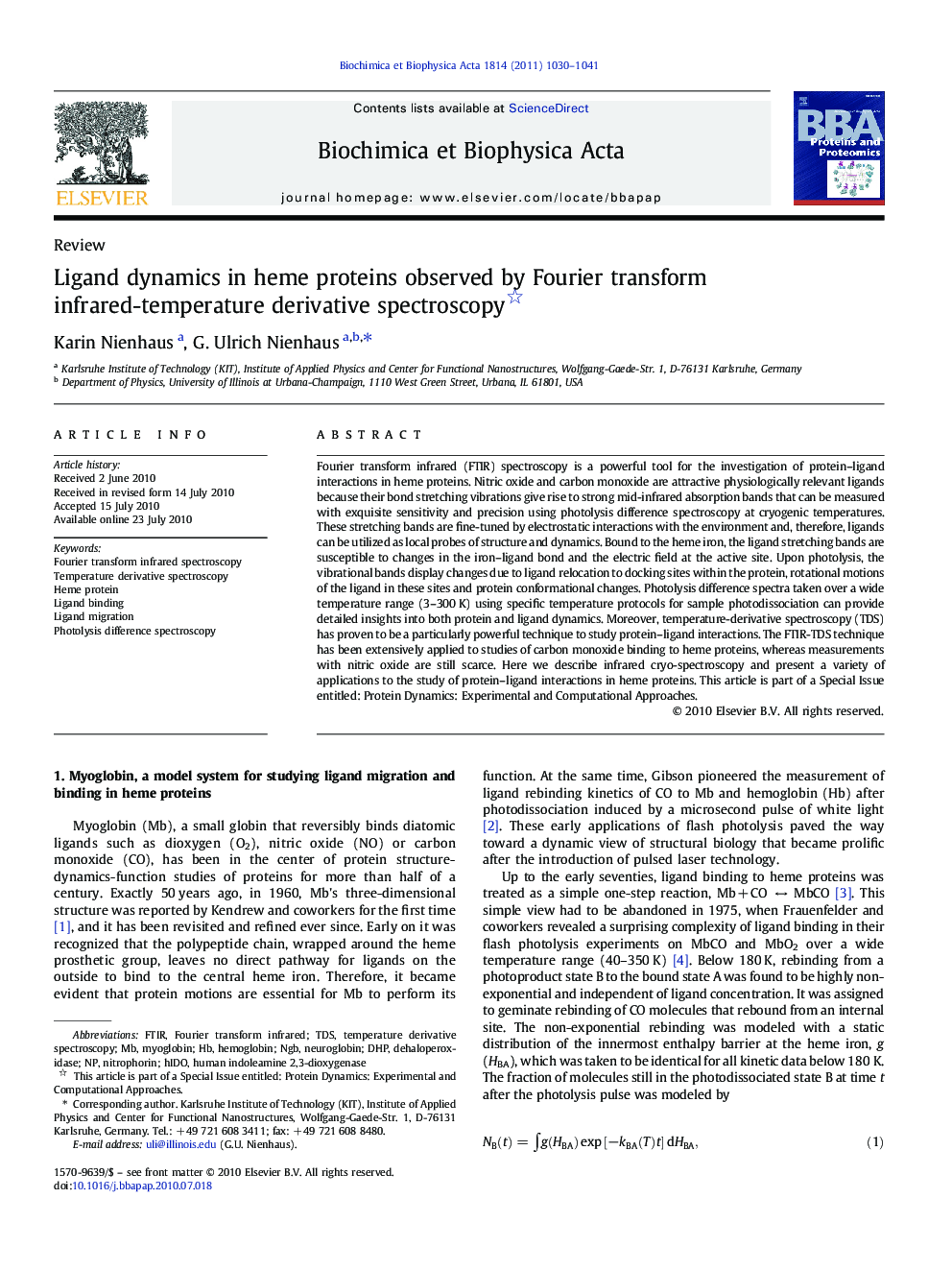| Article ID | Journal | Published Year | Pages | File Type |
|---|---|---|---|---|
| 1178722 | Biochimica et Biophysica Acta (BBA) - Proteins and Proteomics | 2011 | 12 Pages |
Fourier transform infrared (FTIR) spectroscopy is a powerful tool for the investigation of protein–ligand interactions in heme proteins. Nitric oxide and carbon monoxide are attractive physiologically relevant ligands because their bond stretching vibrations give rise to strong mid-infrared absorption bands that can be measured with exquisite sensitivity and precision using photolysis difference spectroscopy at cryogenic temperatures. These stretching bands are fine-tuned by electrostatic interactions with the environment and, therefore, ligands can be utilized as local probes of structure and dynamics. Bound to the heme iron, the ligand stretching bands are susceptible to changes in the iron–ligand bond and the electric field at the active site. Upon photolysis, the vibrational bands display changes due to ligand relocation to docking sites within the protein, rotational motions of the ligand in these sites and protein conformational changes. Photolysis difference spectra taken over a wide temperature range (3–300 K) using specific temperature protocols for sample photodissociation can provide detailed insights into both protein and ligand dynamics. Moreover, temperature-derivative spectroscopy (TDS) has proven to be a particularly powerful technique to study protein–ligand interactions. The FTIR-TDS technique has been extensively applied to studies of carbon monoxide binding to heme proteins, whereas measurements with nitric oxide are still scarce. Here we describe infrared cryo-spectroscopy and present a variety of applications to the study of protein–ligand interactions in heme proteins. This article is part of a Special Issue entitled: Protein Dynamics: Experimental and Computational Approaches.
